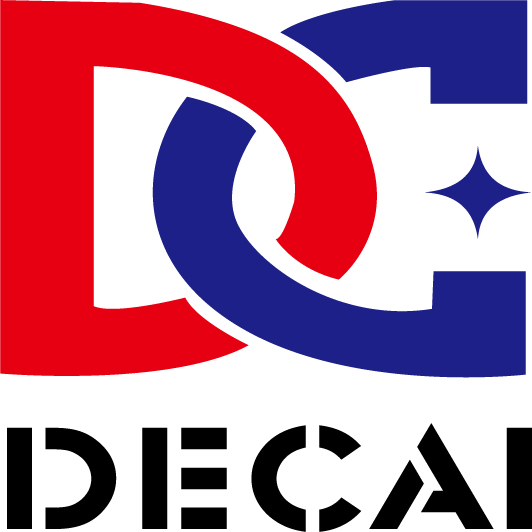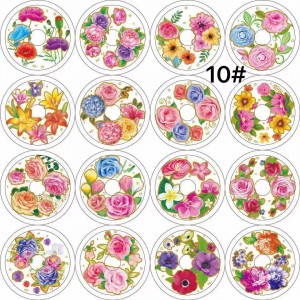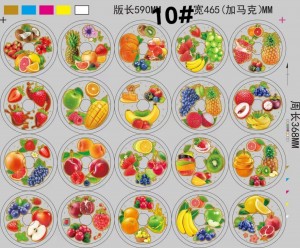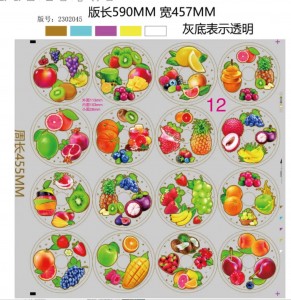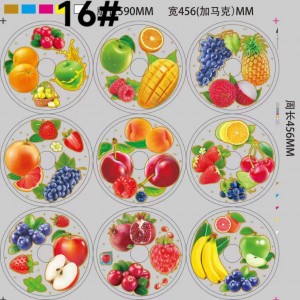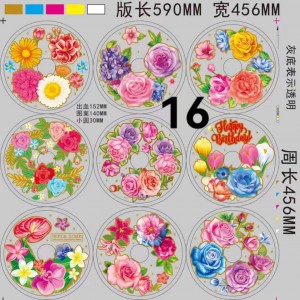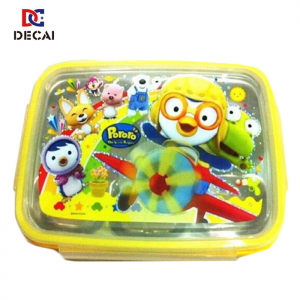Be ready plate IML in mold label flower fruit design for plastic basin
Product description
IML (in-mold labeling) label for a plastic basin can be a great way to enhance its aesthetic appeal and marketability. These labels are highly durable and scratch-resistant, ensuring that they will stay looking great even after repeated use and exposure to varying environments.
Some advantages of IML labels for plastic basins include:
1. Enhanced Design - IML labels can add a pop of color and texture to your plastic basin, making it more eye-catching and unique.
2. Branding Opportunities - IML labels can be customized to include your company logo or brand messaging, helping to increase brand awareness and recognition.
3. Durability - Unlike traditional paper labels, IML labels are fused into the surface of the plastic basin during the molding process, making them highly resistant to wear and tear, and providing long lasting performance.
4. Cost-Effective - IML labels can be a cost-effective way to decorate your plastic basin, as they do not require additional adhesive or application processes.
In summary, an IML label for a plastic basin can help to elevate the look and quality of your product, making it stand out in a crowded marketplace while also providing long-lasting value to your customers.
Product show




Common problem
Q:What are the influencing factors of the cut size of the IML in mold label and how to measure it correctly?
1) Mainly shrinkage. The label material and the shrinkage ratio of the injection molding machine will all affect the effect after injection molding. It is necessary to measure and test about the product material, label thickness and the shrinkage of the injection molding machine itself, and finally achieve the perfect effect, which can be completely seamless.
2) Make the correct cut size according to the product. It is best if the customer can provide product samples, and then we can make the cut size based on the samples.
Q:The reason why the IML label cannot be attached to the mold/Reasons for insufficient static electricity of IML labels:
1) There is no static electricity added to the label when it leaves the factory. It is equipped with an static charger/electrostatic generator to add static electricity.
2) The environment is humid and static electricity will run away during shipping. Equipped with an electrostatic device/static charger.
3) If you cannot add static electricity using an electrostatic generator, it may be related to the material of the label. Contact us to confirm the reason. 4) If it is manual injection molding, try using a wet rag and adding water.
4) If it is a robot, it may be caused by static electricity removal at the factory.
Q:The color of the IML label becomes darker after injection molding:
1) The base color of the product is too dark, you can use two layers of white when designing.
2) Thicken and deepen the white ink, or use high-concentration white.
Q:The label color is different from the design file:
1) The customer provides an electronic draft or sample label. After the customer confirms the color and size, the maximum difference between the produced label and the design file is 5%.
2) Determine some spot color numbers according to the Pantone color card.
Production process

IML or In-Mold Labeling is a printing technology that involves the embedding of labels or graphics into the molded product during the production process.
The production process of IML labels involves several steps, including:
1. Design and artwork preparation: The first step is to design the label on computer software and prepare it for printing. This step involves selecting the appropriate design elements, colors, and typography to achieve the desired result.
2. Printing of labels: Once the design is finalized, high-quality labels are printed using a specialized printing technology that ensures the colors are sharp and accurate.
3. Label cutting: After printing, the labels are cut into the desired shape and size using cutting machines. The cut labels are then stacked and prepared for the next step.
4. Label placement in a mold: In this step, the cut labels are placed in a mold that matches the shape of the product to be produced. The labels are carefully placed in the mold to ensure perfect alignment and positioning.
5. Injection molding: After the labels are placed in the mold, plastic is injected into the mold, bonding with the label, and fusing it into the final product. This process creates a seamless and permanent bond between the label and the product.
6. Product finishing: Once the product is molded, it is cooled and removed from the mold. It then undergoes final quality checks and finishing touches before being packaged and shipped to the customer.
The production process of IML labels is highly efficient, streamlined, and cost-effective. It ensures the labels are of the highest quality, durable, and long-lasting, making them ideal for products that require high-quality branding and labeling. With IML technology, companies can achieve custom labeling that is eye-catching and distinctive, helping to increase brand recognition and differentiation.
Company profile
Decai Honorise is a leading manufacturer of heating transfer field, one-stop service comprehensive enterprise. The products involves the following major aspects:High-precision hot stamping silicone rubber roller and wheel、gravure printing rubber roller and various industrial rubber rollers,Thermal transfer film labels and in-mold labeling,Heat transfer machine and hot stamping machine.Integrating production, sales and R&D together. In strict accordance with printing industry standards for production and management. We're own scientific formula, precise processing methods and superb grinding technology, we provide high-quality products with advanced production equipment and strong technical force.


Exhibition


FAQ
1.Are you a manufacturer?
2.Can you provide samples?
Yes, we can provide you samples for quality checking. Please let us know your requirements, then we can arrange samples according to your requirements. Our samples are free, but the delivery charge is on your side.3.How can we guarantee quality?
Always a pre-production sample before mass production;Always final Inspection before shipment.
4.What is "IML"?
The term "in mold labeling" is directly derived from the technique: a preprinted polypropylene (PP) label is placed in a mold.Then the molten PP is added to the mold. It fuses with the label, and while curing, takes the shape of the mold. Effect: label and injection product become one.
5.This is the first time to buy the packaging, what information I need to provide in order to get a price?
1)Material of your product
5)If possiable pls send sample product to us6.How can we contact you as soon as possible?
We are always available on Alibaba.com, WhatsApp, Wechat. You can also reach us by email. You are welcome to send us any questions anytime and we will reply you.
Whatsapp/Wechat:+8618700958737
